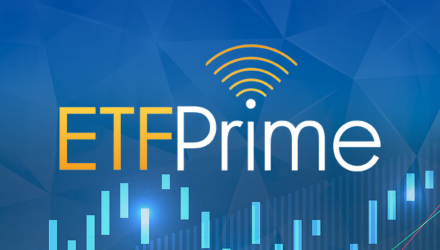On this week’s episode of ETF Prime, host Nate Geraci speaks with president of ETF Trends and ETF Database, Tom Hendrickson, about where investors are currently looking to find inflation hedges for their portfolios, including a deep dive into the uptick in advisor research interest around commodities.
Geraci is also joined by Federated Hermes’ director of ETF business, Brandon Clark, to discuss their entry into the ETF marketplace from the world of mutual funds, with the launch of two bond ETFs.
Closing out the show, Geraci speaks with Luke Oliver, managing director and head of strategy at KraneShares, to discuss two of their largest funds, one of which is down 40% for the year but has brought in $8 billion in assets, and the other of which is considered one of the best-performing ETFs of the year.
The episode begins with a look at the website data and analytics from ETF Trends and ETF Database about which topics advisors and investors are researching heavily right now. Foremost among them is commodities. Commodities tend to be a standard inflation hedge, says Hendrickson, and so it makes sense that investors and advisors are researching commodity strategies, given the current historic inflation highs.
Data for ETF Trends and ETF Database is compiled from search habits, including which ETF tickers are specifically being looked at most, as well as other analytics. Current sentiment is also assessed through polling via webcasts, Hendrickson explains.
“A recent polling question asked: ‘Which macroeconomic event has the biggest impact on the markets in the next 12 months?’” Hendrickson gives as an example of a recent poll. “41%, by far the largest proportional amount, selected inflation.”
Geraci and Hendrickson discuss options for advisors looking to invest in commodities, from targeted exposure with the United States Oil Fund LP (USO) to strategic investment into the SPDR Gold Shares (GLD) and any gold-related ETFs, which are relevant due to gold’s lack of correlation to other commodities types. Meanwhile, the Invesco Optimum Yield Diversified Commodity Strategy No K-1 ETF (PDBC) is a more middle-of-the-road, diversified approach to handling inflation, one that has also gotten a lot of engagement.
Outside the commodities space, the iShares TIPS Bond ETF (TIP) and related shorter-duration variations of the fund have all gotten more flows and interest.
“There’s no shortage of challenges for the advisor. If you look at valuations and the constant search for yield, and you bring in the concept of where inflation and rates are headed… there’s never been a better time for advisors to have all the tools at their disposal to do the research that is requisite for constructing portfolios in a way that makes sense for clients,” Hendrickson says.
Brandon Clark is next to discuss the impending launch of Federated Hermes’ first two ETFs after years in the mutual fund and money market space. The firm believes that it is a good time for active management and sees a wealth of opportunity within the ETF space.
“Approaching the ETF market, I think, is really important from our perspective because as clients’ preferences have evolved over the last 30 years, more clients want to access investment expertise in a vehicle that makes sense to their client. From an asset manager’s perspective… we’ve got to be able to meet clients where they want to be met,” Clark explains. Federated Hermes sees things potentially leaning more into the ETF space going forward, he adds.
The podcast closes with KraneShares’ Luke Oliver discussing the KraneShares CSI China Internet ETF (KWEB), which has been down but has had record influxes of flows into the fund, as well as the KraneShares Global Carbon ETF (KRBN), one of the top-performing funds of the last two years, KRBN focuses on global carbon cap-and-trade markets and the associated carbon allowances.
Oliver describes KRBN as a “free market, capital market solution to a global problem,” and explains that carbon markets are innovative markets that have enormous potential for growth, particularly as carbon caps tighten to meet emission reduction requirements.
KWEB is currently down roughly 55% from February highs but has seen nearly $8 billion in inflows year-to-date. KraneShares believes that the fundamentals of Chinese tech companies are still very strong, however, despite current valuations. “What we’re seeing is smart money shifting towards opportunity at these discounted prices,” Oliver says.
Listen to the Entire ETF Prime Episode With Tom Hendrickson:
For more ETF Prime podcast episodes, visit our ETF Prime channel.

